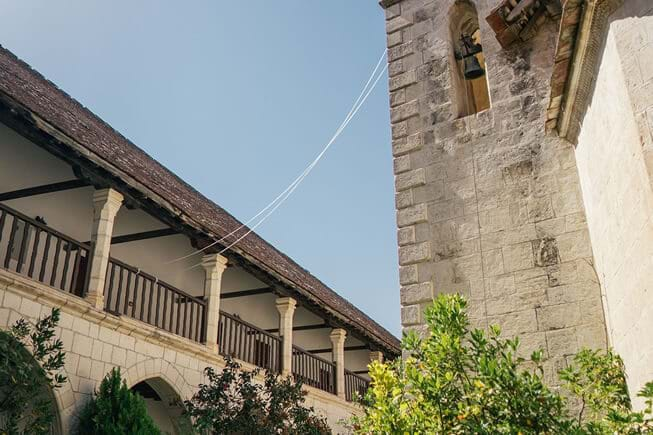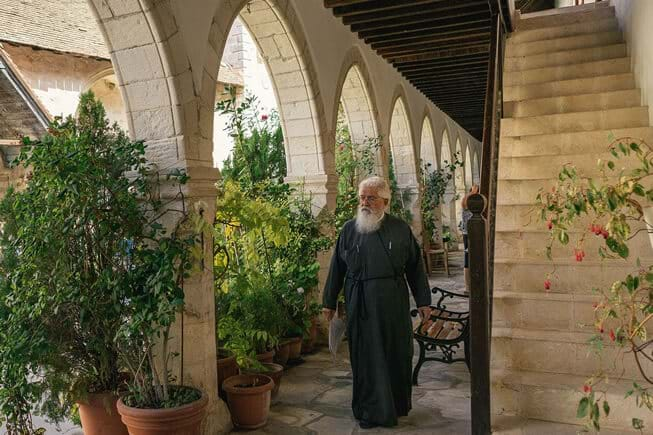In the twelfth century, a monk named Ignatios was walking along the Pafos coastline when he stumbled upon an icon of the Virgin Mary. Legend has it that the icon must have been tossed into the sea from somewhere in Asia Minor during the iconoclastic periods of the Byzantine Empire (in the eighth and ninth centuries), when both the creation and veneration of figural icons were banned. When Ignatios retrieved the icon from the sea, he had a vision of the Virgin Mary, who told him to build a monastery. He did just that in 1152, choosing a plot high in the hills about 40 kilometres northeast of Pafos. You can visit the Panagia Chrysorrogiatissa Monastery on a day trip. The current building, shaped in a triangular cloister and constructed from rust-hued stone, dates to 1770. Fittingly, the monastery houses a collection of important icons, including a fifteenth-century rendering of the resurrection of Lazaros, a seventeenth-century image of the Virgin May giving alms, and an eighteenth-century work known as the Virgin Chrysorrogiatissa. The icon of Christ and the Virgin Mary adorned with silver and gold is said to have been painted by St. Luke. Other items on display include Bibles, manuscripts, crosses, and religious objects. The monastery also houses a winery. Indeed, you can visit the Panagia Chrysorrogiatissa Monastery during the Monastery and Winery Tour sponsored by Annabelle on 20 April as part of its Easter programming. Contact Guest Services for details and reservations.

